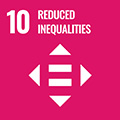- Docente: Maurizio Brizzi
- Credits: 6
- SSD: SECS-S/01
- Language: Italian
- Teaching Mode: Traditional lectures
- Campus: Bologna
- Corso: First cycle degree programme (L) in Management and Marketing (cod. 8406)
-
from Feb 12, 2025 to May 21, 2025
Learning outcomes
After attending the course, students will be able to apply several statistical techniques, in order to evaluate and analyse a set of economic and business data.
Course contents
First section: exploratory statistics
Statistical data: classification and representation. Mode, median and centiles. Analytic mean values. Measures of variability and concentration. Indices of heterogeneity. Statistical ratios and index numbers. The relationship between two variables. Measures of association. Linear regression and correlation.
Second section: elements of probability
Events and logical operations. Space of events. Combinatorics. Axioms and elementray probability. Conditional probability and Bayes formula. Discrete random variables and distribution models. Continuous random variables and distribution models.
Third section: statistical inference
Population and sample. Sample statistics and estimators. Sample distributions. Confidence intervals for estimating a frequency and a mean. Hypothesis testing about mean values and frequencies. Tests of independence.
Fourth section: sampling methods
Sampling plan and sampling strategy. Simple random sampling. Stratified sampling. Cluster sampling.
Readings/Bibliography
Maurizio Brizzi, Introduzione alle probabilità e all'inferenza statistica. Editor: libreriauniversitaria.it
The whole set of slides, presented during the course, will be available to students in virtuale.unibo platform.
Teaching methods
Frontal lessons with exercises.
Assessment methods
Written test (composed by three exercises) and oral test, both compulsory.
Teaching tools
In virtuale.unibo platform will be included also some extra slides with solved ecercises. If needed, also an English version of the slides is available.
Office hours
See the website of Maurizio Brizzi
SDGs

This teaching activity contributes to the achievement of the Sustainable Development Goals of the UN 2030 Agenda.
